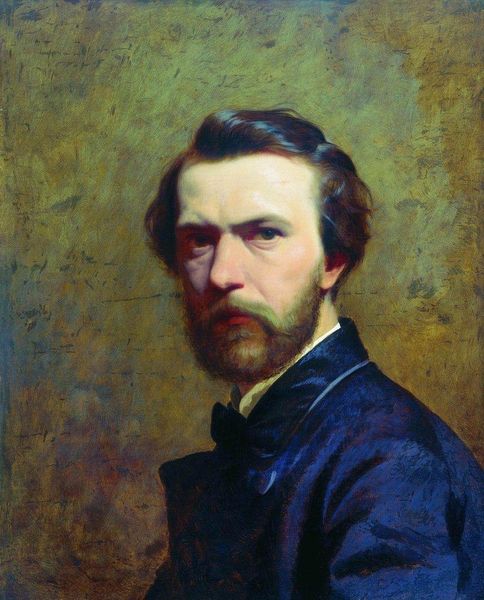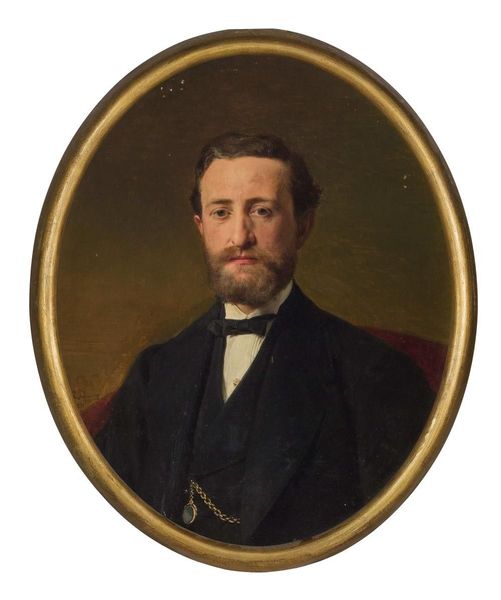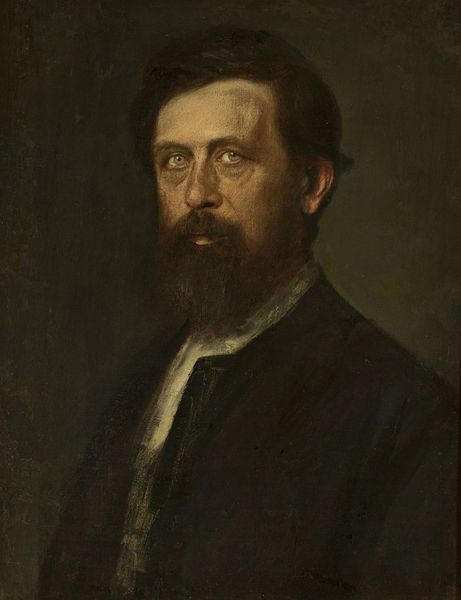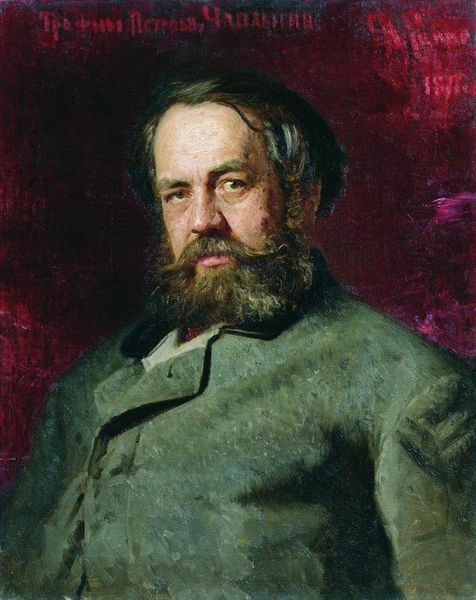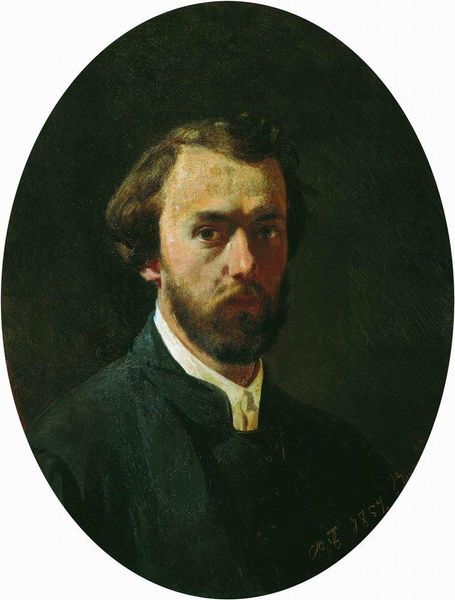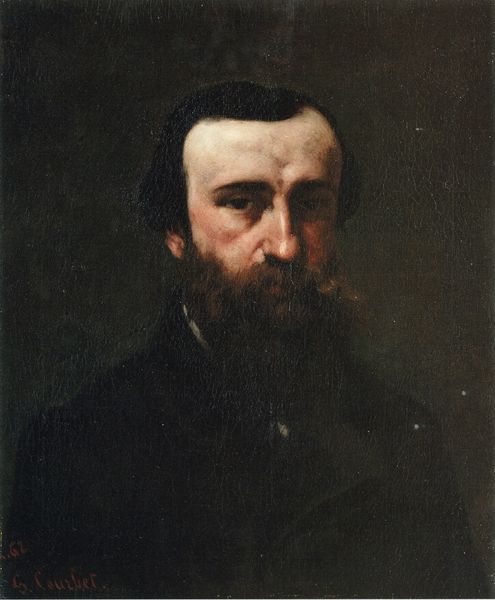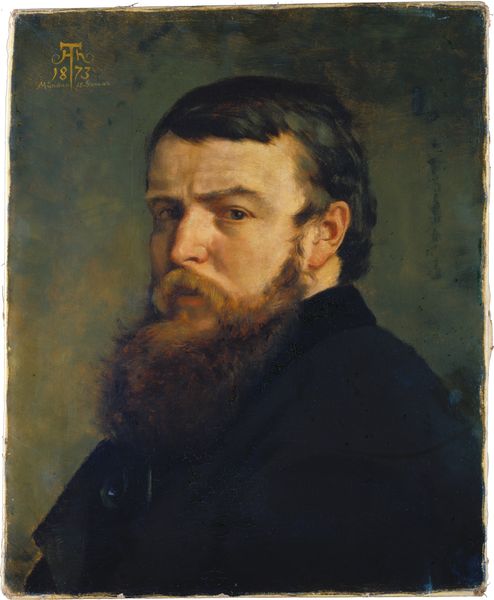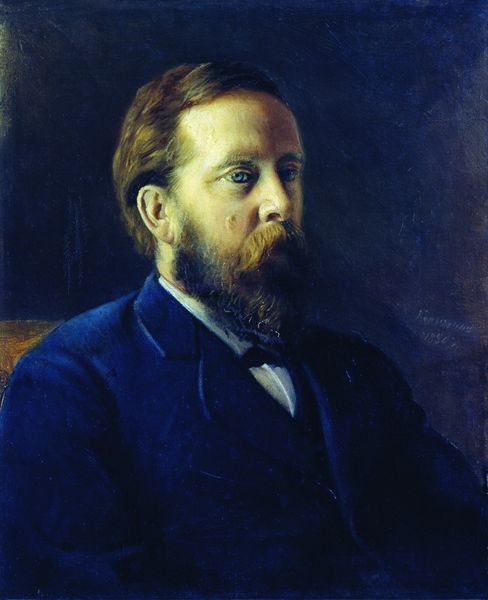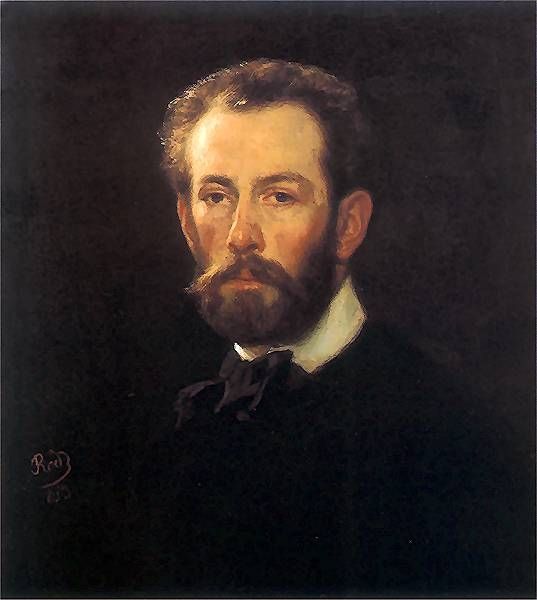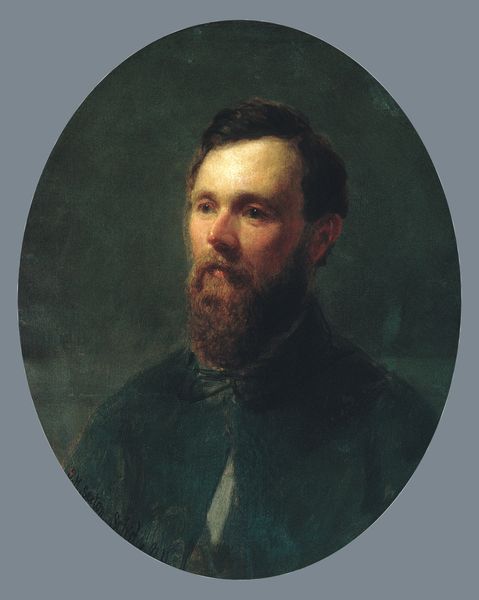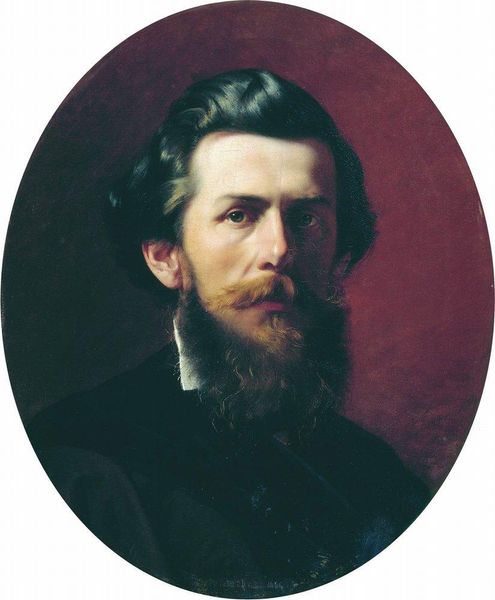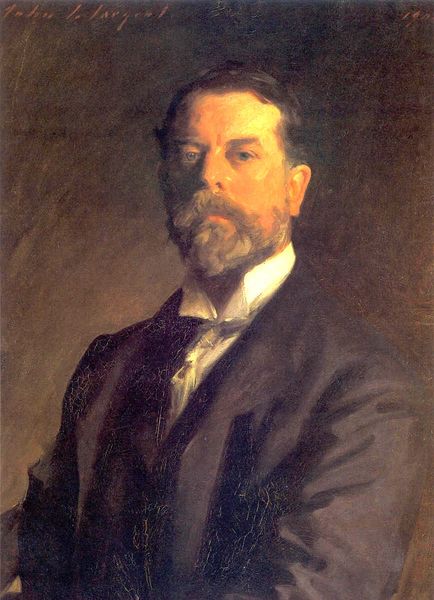
Copyright: Public domain
Curator: Looking at Fyodor Bronnikov's self-portrait from 1889, painted in oil, what strikes you initially? Editor: A subdued intensity. It's quite intimate. The tight crop and oval frame, coupled with those serious eyes, invite a close, almost confrontational viewing experience. I want to know the context behind his gaze. Curator: Bronnikov was a Russian artist deeply rooted in academic traditions, spending a significant amount of his career in Rome. He made his name portraying scenes from antiquity and religious painting. His dedication to meticulous detail mirrors a fascination with labor that feels particularly notable in this very human self-portrait. Editor: Absolutely, considering the period's artistic hierarchies, this level of detailed rendering elevates self-representation. His gaze transcends mere self-observation; there's a subtle questioning of artistic authority, as though to ask whether his work for institutions fulfills his sense of self. Were these self-portraits meant for a particular exhibition, or patron? Was there a market for artist self-portraits, especially given his subject matter of choice? Curator: His skill is undeniable, look closely at the gradations in tone in his beard, how he builds the texture, it shows his understanding of materiality. The layers of oil paint create a sense of depth that adds dimension to the artistic process, turning observation into meticulous construction. His choice of somewhat muted colors indicates deliberate craftsmanship, each stroke meticulously executed and layered. What’s significant for me is that here is labor that results in the image we see; oil on canvas presented inside a museum. Editor: Precisely, this invites analysis through a historical lens. How does it perform within institutions, or when placed alongside other Russian painters of that era? It makes one ponder on what public function Bronnikov envisioned for his portrait, a genre traditionally associated with status and power. Was he engaging with existing visual representations, or seeking to redefine them through a more introspective and perhaps even vulnerable approach? Curator: In a way, you get a real feel for the amount of time and material used to craft the illusion of a living and breathing human. Editor: Exactly! And considering how self-portraits function now in a society saturated with images, analyzing its production and how it was shown then adds a valuable historical texture to its modern viewing. Curator: A point well made that emphasizes why revisiting art through materiality provides valuable perspective on both process and reception. Editor: Indeed. A convergence point between individual and society!
Comments
No comments
Be the first to comment and join the conversation on the ultimate creative platform.

